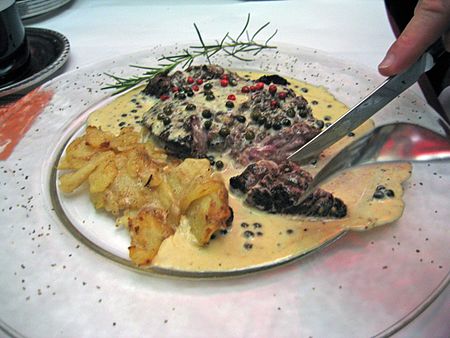Rugiaevit
| |||||||||||||||
Read other articles:
Muhr am See. Muhr am See adalah kota yang terletak di distrik Weißenburg-Gunzenhausen di Bavaria, Jerman. Kota Muhr am See memiliki luas sebesar 10.95 km² . Muhr am See pada tahun 2006, memiliki penduduk sebanyak 2.220 jiwa. lbsKota dan kotamadya di Weissenburg-GunzenhausenAbsberg | Alesheim | Bergen | Burgsalach | Dittenheim | Ellingen | Ettenstatt | Gnotzheim | Gunzenhausen | Haundorf | Heidenheim | Höttingen | Langenaltheim&#…

У этого термина существуют и другие значения, см. Обири (значения). Хеллен Обириангл. Hellen Obiri Общая информация Полное имя Hellen Onsando Obiri Дата и место рождения 13 декабря 1989(1989-12-13)[1] (34 года)Кисии[d], Кения Гражданство Кения IAAF 14424921 Международные медали Лёгкая атлетика Оли…

ХристианствоБиблия Ветхий Завет Новый Завет Евангелие Десять заповедей Нагорная проповедь Апокрифы Бог, Троица Бог Отец Иисус Христос Святой Дух История христианства Апостолы Хронология христианства Раннее христианство Гностическое христианство Вселенские соборы Ни�…

Place in New Hampshire, United StatesRaymond, New HampshireThe Common (Lyman Memorial Park), 2013 SealLocation in Rockingham County and the state of New Hampshire.Coordinates: 43°02′10″N 71°11′00″W / 43.03611°N 71.18333°W / 43.03611; -71.18333CountryUnited StatesStateNew HampshireCountyRockinghamIncorporated1764Government • Board of SelectmenScott Campbell, ChairPatricia BridgeoRani MerrymanDoug VogelAnthony Clements • Town ManagerErnes…

Culinary cream sauce Peppercorn SauceSteak au poivre with a peppercorn sauceTypeCreamCourseAnyPlace of originFranceServing temperatureHotMain ingredientsPeppercorns and heavy creamIngredients generally usedButter, wine, shallots, brandy or cognac and additional seasoningsVariationsWhiskey substituted for brandy Media: Peppercorn Sauce Peppercorn sauce is a culinary cream sauce prepared with peppercorn, which is prepared as a reduction of the cream in the cooking process.[1]…

Original song written and composed by Felix Bernard (music) and Richard B. Smith (words) This article is about the song. For other uses, see Winter Wonderland (disambiguation). Winter Wonderland1934 sheet music coverSongPublished1934 by Bregman, Vocco and ConnGenreChristmasComposer(s)Felix BernardLyricist(s)Richard Bernhard Smith Winter Wonderland is a song written in 1934 by Felix Bernard and lyricist Richard Bernhard Smith. Due to its seasonal theme, it is often regarded as a Christmas song in…

此條目可参照英語維基百科相應條目来扩充。 (2021年5月6日)若您熟悉来源语言和主题,请协助参考外语维基百科扩充条目。请勿直接提交机械翻译,也不要翻译不可靠、低品质内容。依版权协议,译文需在编辑摘要注明来源,或于讨论页顶部标记{{Translated page}}标签。 约翰斯顿环礁Kalama Atoll 美國本土外小島嶼 Johnston Atoll 旗幟颂歌:《星條旗》The Star-Spangled Banner約翰斯頓環礁地�…

River in Oregon, United StatesCape CreekCape Creek passes under Cape Creek Bridge, which carries U.S. Route 101.Location of the mouth of Cape Creek in OregonLocationCountryUnited StatesStateOregonCountyLanePhysical characteristicsSourcenear Herman Peak • locationCentral Oregon Coast Range, Siuslaw National Forest • coordinates44°07′47″N 124°00′19″W / 44.12972°N 124.00528°W / 44.12972; -124.00528[1] MouthPacific Ocea…

Universidad Internacional de KirguistánМеждународный университет Кыргызстана Tipo PúblicaFundación 1993LocalizaciónDirección Biskek, KirguistánCoordenadas 42°52′39″N 74°35′08″E / 42.877451, 74.585494Sitio web http://iuk.kg/[editar datos en Wikidata] La Universidad Internacional de Kirguistán[1][2] (en ruso: Международный университет Кыргызстана) es una universidad …

Hollywood LifeURLhollywoodlife.comTipeBudaya populer, beritaBersifat komersial?YaBahasaInggrisPemilikBonnie FullerBerdiri sejak2009; 15 tahun lalu (2009)NegaraAmerika Serikat StatusAktif Hollywood Life adalah merek media digital Amerika yang diluncurkan pada tahun 2009 oleh editor majalah Bonnie Fuller. Situs ini mencakup berita selebriti, mode, kecantikan, isu-isu wanita, dan hiburan. Situs ini juga menayangkan acara penghargaan dan acara budaya pop lainnya.[1] Sejarah Hollywood Li…

ヨハネス12世 第130代 ローマ教皇 教皇就任 955年12月16日教皇離任 964年5月14日先代 アガペトゥス2世次代 レオ8世個人情報出生 937年スポレート公国(中部イタリア)スポレート死去 964年5月14日 教皇領、ローマ原国籍 スポレート公国親 父アルベリーコ2世(スポレート公)、母アルダその他のヨハネステンプレートを表示 ヨハネス12世(Ioannes XII、937年 - 964年5月14日)は、ロー…

Provincial park in British Columbia, Canada Jedediah Island Marine Provincial ParkIUCN category II (national park)Map of British ColumbiaLocationNanaimo Land District, British Columbia, CanadaNearest citySechelt, BCCoordinates49°30′06″N 124°12′16″W / 49.50167°N 124.20444°W / 49.50167; -124.20444Area603 ha. (6.03 km²)EstablishedJuly 13, 1995Governing bodyBC Parks 49°29′55″N 124°12′15″W / 49.49861°N 124.20417°W / 49…

2013 single by Primal ScreamIt's Alright, It's OKSingle by Primal Screamfrom the album More Light Released7 May 2013GenreAlternative rock, psychedelic rock, folk rock, gospel[1][2]Length5:12LabelIgnition RecordsSongwriter(s)Bobby Gillespie, Andrew InnesProducer(s)David HolmesPrimal Scream singles chronology 2013 (2013) It's Alright, It's OK (2013) Invisible City (2013) It's Alright, It's OK is a song by the band Primal Scream. It was released as a single on 7 May 2013, as the sec…

Canadian courier company This article is about the Canadian courier. For its former parent, the American automotive filter manufacturer, see Purolator Filters. Purolator Inc.FormerlyTrans Canada Couriers, Ltd.Company typeJoint VentureIndustryCourierFounded1960; 64 years ago (1960) in Eastern CanadaHeadquartersMississauga, Ontario, CanadaNumber of locations176 operations facilities104 Shipping Centres (2021)Key peopleJohn Ferguson (President and CEO)ProductsParcel deliveryL…

La carta de los seis (en rumano, Scrisoarea celor şase) es una carta abierta firmada por seis altos cargos del Partido Comunista Rumano para criticar las políticas desarrolladas por Nicolae Ceauşescu, presidente de Rumanía. Los firmantes eran seis altos cargos del PCR: Gheorghe Apostol, Alexandru Bârlădeanu, Silviu Brucan, Corneliu Mănescu, Constantin Pîrvulescu y Grigore Răceanu. Luego de que fuese publicada el 11 de marzo de 1989 en la radio internacional de la BBC y en Radio Europa L…

Overview of the water supply and sanitation in the Philippines The Philippines' water supply system dates back to 1946, after the country declared independence. Government agencies, local institutions, non-government organizations, and other corporations are primarily in charge of the operation and administration of water supply and sanitation in the country. Sources of water The Ambuklao Dam and Hydroelectric Power Plant in Bokod, Benguet, Philippines. The Philippines' main sources of water are…

Artikel ini mungkin terdampak dengan peristiwa terkini: Invasi Rusia ke Ukraina 2022. Informasi di halaman ini bisa berubah setiap saat. Mikhail MishustinМихаил МишустинMishustin pada tahun 2021 Perdana Menteri RusiaPetahanaMulai menjabat 16 Januari 2020PresidenVladimir PutinPendahuluDmitry MedvedevPenggantiPetahanaDirektur Layanan Pajak FederalMasa jabatan6 April 2010 – 16 Januari 2020PresidenDmitry MedvedevVladimir PutinPendahuluMikhail MokretsovPenggantiDaniil Yeg…

English painter Detail showing the butcher from An ocean of motion about Spanish commotions or the windy explosion of pot-hous oration (see gallery) William Henry Pyne (1769 in London – 29 May 1843 in London) was an English writer, illustrator and painter, who also wrote under the name of Ephraim Hardcastle.[1] He trained at the drawing academy of Henry Pars in London. He first exhibited at the Royal Academy in 1790. He specialized in picturesque settings including groups of people…

В Википедии есть статьи о других людях с такой фамилией, см. Чернов; Чернов, Евгений. Евгений Чернов Общая информация Полное имя Евгений Александрович Чернов Родился 23 октября 1992(1992-10-23)[1] (31 год)Томск, Россия Гражданство Россия Рост 180[2] см Позиция защитник Информ…

Personification of sleep in Greek mythology For other uses, see Hypnos (disambiguation). HypnosPersonification of sleepHypnos marble head (National Roman Museum, Rome)AbodeUnderworldSymbolPoppy, River Lethe, CottonwoodPersonal informationParentsNyx alone[1] Nyx and Erebus[2]SiblingsThanatos (twin brother)ConsortPasitheaEquivalentsRoman equivalentSomnus Greek deitiesseries Primordial deities Titans and Olympians Water deities Chthonic deities Personifications List Achlys Adephagia…
